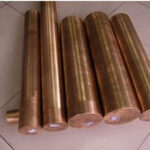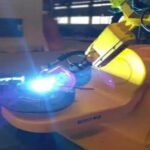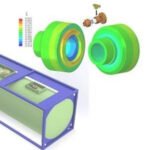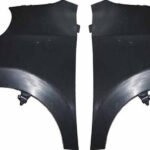Once the die-casting machine has a warning sign during the working process, the operator should pay great attention to it, and observe it calmly, determine the location of the failure and the possible cause, and determine a feasible maintenance method. Operators must be reminded that they should work in accordance with the “work procedures” formulated by the company and do not operate in violation of regulations to avoid greater accidents.
1. The oil pump cannot be started
Table of Contents
Inspection and analysis: Press the start button of the oil pump and observe whether the motor relay is closed.
1. Check if the relay is not closed
1) Whether the motor thermal relay is activated or damaged.
2) Whether the power circuit is normal (check with a multimeter).
3) Whether the contacts of the start and stop buttons are normal, and whether the control circuit is open.
4) Whether the relay coil is damaged (check with a multimeter).
2. Check if the relay is closed after the oil pump is started
1) Whether the oil pump is damaged or stuck.
2) Whether the circuit from the relay to the motor is normal.
3) Whether the oil pump is damaged or the assembly is too tight. It should be easy to move the coupling by hand, and it is appropriate to have a clearance of about 3~5mm for the axial movement of the coupling.
2. Press the start button of the oil pump and the thermal relay will trip
Inspection and analysis: Press the start button of the oil pump and the thermal relay will trip. This is related to whether the current, load, and three-phase resistance are symmetrical.
1) The motor thermal relay is damaged or the setting current is too small.
2) The voltage is too low to increase the current or the three-phase voltage is unbalanced.
3) The resistance of the three-phase winding of the motor is unbalanced.
4) The total pressure or double pump pressure is adjusted too high, causing the machine to overload and trip.
5) The oil pump is damaged or the assembly is too tight, causing the motor to overload and trip.
3, no total pressure
Inspection and analysis: After the oil pump is started, press the pressure button, and first observe whether the pressure and flow indicator ammeters show values to determine whether there is current in the solenoid coil of the proportional pressure valve (proportional relief valve), and distinguish whether it is electrical or hydraulic failure.
1. Check if there is current output
1) Whether the oil pump is reversed (when a person faces the direction of the oil pump shaft, clockwise rotation means forward rotation).
2) Check the overflow valve to see if it is improperly adjusted or stuck.
3) Check whether the shut-off valve is closed.
4) Whether the throttle valve of the proportional relief valve is missing or loose.
2. Check if there is no current output
1) Whether the rectifier board is normal, and whether the pressure proportional amplifier board is adjusted improperly or damaged.
2) Observe whether the computer is working properly, press the depressor button with your hand to see if there is input at the corresponding point on the computer, and whether there is output at the total pressure point. If there is no input, check whether the line between the depressor button and the computer is normal, if there is input If the total pressure point has no output, the computer malfunctions or the back door is not closed and other conditions are not met.
3) Check whether the circuit between the output of the electric proportional board and the oil valve is normal, and whether the electric proportional coil is normal.
4) Check whether the pressure dialing code is normal.
4, no automatic
If the manual actions are normal, but there is no automatic action, you should check whether the safety door limit switch is normal and whether the relevant action returns to the original point (according to the requirements of the machine manual). For example, the Lijin horizontal cold chamber die-casting machine should meet the following conditions before performing automatic action: the safety door input signal is on; the automatic input signal is on; the mold-locking input signal is on; the thimble return limit input signal is on, and the return hammer is in place Light up.
If the manual action is abnormal, it should be checked and ruled out first.
5, can not adjust the mold
Inspection and analysis: Choose the mode of mold adjustment for operation, the machine cannot realize the mold adjustment movement, you should check the following:
1) Whether the conditions for mold adjustment movement are met.
2) Whether the mold adjustment pressure value is set too low.
3) Whether the manual operation method is correct.
4) If there is no problem with the above content check, check the following content:
①Whether the mold adjusting hydraulic motor is stuck or whether the mold adjusting motor is damaged.
②Whether the spool of the mold adjusting hydraulic valve is stuck.
③Whether each transmission pair of the mold adjusting mechanism is worn or stuck.
6, the whole machine has no action
Inspection and analysis: After starting the oil pump, the whole machine has no manual or automatic action. Press the pressure button (pressure and flow have been set parameters) to see if there is pressure.
1. Check if there is no pressure
1) Whether the rectifier board is damaged or the fuse is burned out.
2) Whether the input and output of the P01 board are normal.
3) Check whether the proportional relief valve is adjusted properly or is damaged or stuck.
4) Whether the computer is working properly.
5) Whether the pressure dialing code is damaged, whether the line is normal, or whether the pressure flow setting is too small.
2. Check if there is pressure
1) Whether the fourteen-way amplifier board is normal.
2) Whether the 0V wiring of all oil valve wires is normal.
7, no mold locking
Inspection and analysis: close the safety door, press the mold lock button (if there is a mold, select a slow speed to avoid damage to the mold), observe whether the mold lock indicator on the electrical box panel is on or the main computer has a mold lock signal output .
1. Check if there is no signal output
1) Whether there is a signal input, if there is no signal input, check the external circuit.
2) Whether the thimble is back, and the mold cannot be locked if the thimble is not back.
3) Check whether the limit switch (Gee) is damaged by clamping the mold in place.
4) If the mode-locking conditions are all satisfied and there is no mode-locking signal output, the computer is damaged.
2. The computer has a signal output, but it still does not lock the mode, please check
1) Whether the clamping pressure is normal (press the clamping button to observe the pressure value on the pressure gauge).
2) Whether the fourteen-way amplifier board is normal (the input and output lights are on at the same time when working).
3) Whether the normal slow speed valve is properly adjusted or damaged, and whether the mold opening and clamping valve is improperly adjusted or damaged.
4) Check whether the connection of the electrical box mold locking output to the oil valve line is normal, and whether the mold locking solenoid valve coil is normal.
5) Whether the clamping cylinder is damaged.
8, no low pressure mode locking
Inspection and analysis: observe whether the low-voltage mode locking indicator on the panel of the electrical box is on.
1) If the light is not on, check the low-voltage mode-locking sensor switch to see if it can be sensed or is damaged.
2) If the light is on, check whether the low-voltage dialing code is adjusted well or damaged.
9, no high pressure mold clamping
Inspection and analysis: If there is no high voltage when the mold clamping moves to the high voltage sensor switch, check whether the high voltage sensor switch is damaged or sensed. If the total pressure is set too low, there is no high voltage clamping.
10. Unconstrained speed mold clamping
Inspection and analysis: Observe whether the computer has input and output at constant speed.
1) If the computer has no constant speed input, check whether the line from the external constant speed selector knob to the computer is normal.
2) If the computer has input or no output, it is a computer failure.
3) If the computer has input and output, check: whether the fourteen-way amplifier board is working properly; whether the line from the fourteen-way amplifier board to the oil valve is normal; whether the oil valve coil is damaged.
4) The spool of the normal speed hydraulic valve is stuck by foreign matter or the normal speed flow is too small.
11, no mold
Inspection and analysis: First, observe whether the mold opening indicator on the main electrical box panel is on and whether the main computer has input and output.
1. No signal output check items
1) Whether the induction switch of mold opening is normal.
2) In manual mode, the mold opening signal light on the computer should be on. Otherwise, check whether the wiring between the mold opening button and the computer is normal. If it is normal, the computer is faulty.
3) In automatic mode, if the automatic selection knob circuit is in poor contact (vibration may cause automatic signal disconnection during feeding), one action cycle cannot be completed.
2. Check if the computer is working normally (with input and output)
1) Whether the fourteen-way amplifier board is working properly.
2) Whether the circuit from the 14-way amplifier board to the oil valve is normal, and whether the oil valve coil is damaged.
3) Whether the mold opening valve core is stuck by foreign matter.
4) Whether the mold opening pressure is abnormal (observe the pressure gauge).
5) Whether the fixing nut between the piston rod and the crosshead is loose.
6) After the mold is locked, there is a sudden power failure, and the mold may not be opened for a long time. At this time, the total pressure should be set to the maximum, and the rapid mold opening should be selected.
7) Check if there is any leakage in the mold opening cylinder.
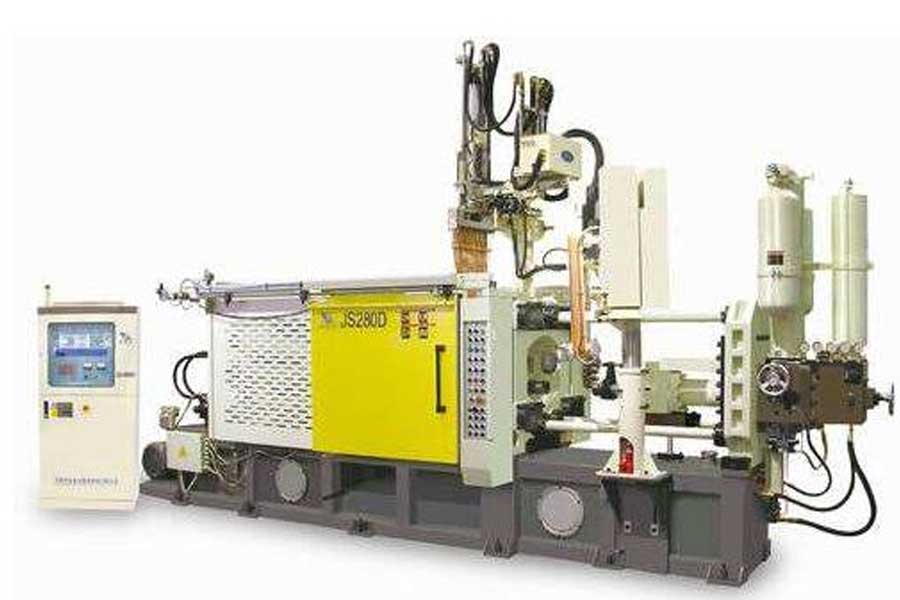
12. No injection action (abbreviated as no shot)
Inspection and analysis: the manual operation of the punch is normal, but there is no injection action in the automatic operation, check the following items (the hot chamber die casting machine should remove the hammer to check):
1) Whether the manual or automatic selection knob is normal.
2) The mold-locking termination sensor switch and the mold-locking confirmation limit switch do not cooperate well, the mold-locking termination sensor switch senses, but the mold-locking termination confirmation limit switch is not pressed, or the limit switch is damaged.
3) The injection termination induction switch is damaged. (The hot chamber die casting machine does not have this option)
4) Whether there is an electrical signal for the first injection speed and hammer return oil valve, and whether the valve core is activated.
5) The injection time is too short or the first speed adjustment is too slow.
6) The injection cylinder is damaged.
7) There is no pressure in the hydraulic system.
8) Whether it is in place before deduction. (The cold chamber die casting machine does not have this option)
13. No two-speed injection motion
Inspection and analysis: The manual operation of the punch is normal, and there is no two-speed injection movement in the automatic operation. First, observe whether the computer has two-speed injection signal input, and whether it has two-speed signal output when it is automatic (the hot chamber die-casting machine should remove the hammer to check).
1. No signal input check items
1) Check whether the two-speed sensor switch is normal.
2) Whether the injection time is set properly.
3) Whether the first speed exercise is normal.
2. The computer has signal input and output inspection items
1) Whether the 14-way amplifier board has input and output to the oil valve.
2) Whether the oil valve coil is normal.
3) Whether the second-speed control valve is normal, and whether the second-speed cartridge valve is normal.
4) The first speed stroke is too long, and the second speed has no stroke.
14. Injection is weak
Inspection and analysis: first check whether there is a two-speed signal and whether the injection has a second-speed, if there is no second-speed, see the second-speed failure analysis, if there is a second-speed, check the following items:
1) Whether the first and second speed adjustment meet the requirements, and whether the second speed flow adjustment can open the second speed flow valve normally.
2) Whether the nitrogen pressure of the fast injection accumulator is within the required range.
3) Whether the injection pressure setting is too small.
15, pressure injection
Inspection and analysis: if the pressure of the punch drops sharply during injection, check
1) Whether the injection cylinder, pressure reducing valve, and cartridge valve are leaking internally.
2) Whether the shut-off valve is tightened.
3) Whether there is nitrogen, the nitrogen pressure is insufficient or the nitrogen pressure is too high.
4) The accumulator is faulty.
16. The furnace temperature cannot be controlled
Inspection and analysis: After the furnace has been heated for a period of time, the pointer of the thermometer does not move. The reasons are as follows:
1) The probe circuit is reversed, loose or damaged.
2) The thermometer is damaged.
17. Alarm
Inspection and analysis: If the machine alarms during manual or automatic operation, that is, the alarm light of the electrical box flashes, and the speaker on the electrical box emits a buzzing sound, it may be caused by the following factors (when the machine has a fault display function, you can Handle directly according to the fault location displayed on the display):
1) Mold opening and locking limit alarm: mold opening termination, mold clamping termination, induction switch or mold locking termination, confirm whether the limit switch is blocked by foreign objects at the same time.
2) Abnormal alarm for mold locking protection: During automatic production, the low-voltage mold locking protection time is up, but the mold locking action is not completed.
3) The voltage of the computer battery is too low: The battery voltage of the PLC’s CPU program is too low, and the battery must be replaced as soon as possible to avoid program loss.
4) Toggle lubrication alarm: Toggle lubricating oil pressure cannot reach the set pressure.
5) Thrimble limit alarm: the thimble out limit and thimble return limit are sensed by foreign objects at the same time.
6) Core-pulling limit alarm: the limit switches before and after the core-pulling stroke are ON at the same time; or if the core-pulling is not selected, the core-pulling-in limit is ON.
7) Motor overload alarm: The motor is overloaded and the motor stops rotating at the same time.
8) Mould adjustment limit alarm: Mould thinness and mould thickness limit switches are OFF.
18. No thimble
Inspection and analysis: The ejector cylinder cannot realize the ejection pin action. You should first observe whether the ejector pin indicator on the electrical box panel is on or whether the computer has a signal output.
1. Check if the indicator light is off or the computer has no signal output
1) Whether the mold is opened in place.
2) If the core-pulling is installed, check whether the core-pulling is in place.
3) Whether the thimble limit switch is damaged.
2. Check if the computer has signal output
1) Whether the thimble pressure is normal (observe the pressure gauge).
2) Whether the fourteen-way amplifier board is normal (observe whether the thimble output indicator on the fourteen-way amplifier board is on).
3) Whether the line from the fourteen-way amplifier board to the hydraulic valve is open, and whether the oil valve coil is normal.
4) Whether the thimble oil valve is normal and whether the thimble cylinder has internal leakage.
5) The ejector pin of the mold is stuck, and the ejector pin cannot be ejected.
19. Computer failure
Inspection and analysis: Observe the indicators on the computer PLC, and perform the following analysis:
1) The POW power indicator is off, indicating that there is no power supply; the green light indicates normal.
2) ALM lights up in red, indicating that the CPU is not working properly; if the lights are off, it indicates normal.
3) BAT lights up in red, the computer battery is out of service; lights up in yellow, the computer battery power is not enough; the light is off, it means normal.
4) RUN lights up green, indicating that the CPU is working normally; if the lights are off, it means that the CPU is not working properly.
20, the hydraulic system oil temperature is too high
Inspection and analysis: After the machine has been working continuously for a period of time, if the oil temperature of the hydraulic system is too high (normal oil temperature is 15~55℃), the following items should be checked:
1) The cooling water inflow is not enough, and the inflow is required to meet the requirements.
2) There is too much dirt in the cooler to clean up as required.
3) The storage capacity of hydraulic oil in the oil tank is lower than the minimum oil level line.
4) The hydraulic system has internal leakage.
5) The water inlet and outlet of the cooler are connected reversely, and the cooling effect is poor.
21. Leakage of the cylinder
Oil cylinder leakage is one of the causes of various failures of the oil cylinder.
The leakage of the oil cylinder includes external leakage and internal leakage. External leakage refers to external leakage at the cylinder barrel and cylinder head, cylinder bottom, oil port, exhaust valve, buffer regulating valve, cylinder head and piston rod, etc., which can be directly observed from the outside. Internal leakage refers to the leakage of pressure oil from the high-pressure chamber inside the cylinder to the low-pressure chamber. It occurs at the connection between the piston and the inner wall of the cylinder, the inner hole of the piston and the piston rod. The internal leakage cannot be directly observed. It is necessary to pass in pressure oil unilaterally, and after stopping the piston at a certain point or terminal, observe whether there is oil leakage at the other oil port to determine whether there is internal leakage.
Regardless of external leakage or internal leakage, the main cause of leakage is poor sealing and poor connection at the joint; secondly, there is internal leakage caused by pressure expansion of the cylinder, and external leakage caused by poor welding of the oil cylinder with a welded structure.
22, gooseneck leakage (hot chamber machine)
1) The taper of the pot is damaged and needs to be repaired.
2) The taper of the nozzle body is incorrect, and the nozzle body that meets the requirements should be replaced.
3) The method of installing the nozzle body is wrong, clean the cone hole of the pot and the nozzle body and reinstall it according to the correct method.
23, plug mouth (hot chamber machine)
The plug nozzle means that the alloy material is solidified in the nozzle head or the nozzle body and cannot be produced continuously, which is mainly caused by insufficient temperature. In case of such problems, it is generally necessary to increase the nozzle temperature or directly use gas to heat it.
24, card hammer head
1) Check whether the punching piston rod is aligned with the center of the pot, install the hammer head to see if it can be turned by hand, and if it can turn, it is aligned.
2) Whether the temperature of the furnace is normal, check whether the temperature displayed on the furnace temperature gauge is within the range of 400~430℃. (Hot cell machine)
3) Because the slag is not cleaned for a long time, the slag accumulates more and more in the furnace or there is too little alloy material in the furnace. Generally, the normal alloy liquid level is about 3cm away from the crucible. (Hot cell machine)
4) The mold sprue sleeve and the feed barrel are not well matched. (Cold room machine)
25, no deduction (hot chamber machine)
First observe whether the indicator light on the front panel of the electric box is on or whether the main computer has a signal output.
1. No signal output check items
Check for signal input before deduction.
2. There are signal output inspection items
1) Whether the connection between the output point before the computer buckle and the oil signal line is normal.
2) Whether the adjustment of the punching pressure is normal (observe the punching pressure gauge).
3) Whether the buckle nozzle oil valve and oil cylinder are normal.
Note: If there is a mold, it should be closed before buckling to avoid knocking off the mold before buckling.
26. After no deduction (hot chamber machine)
Analysis: Check whether the indicator light is on after the panel of the electric box is buckled or whether the computer has signal output.
1. If there is no signal output
Then check whether the signal is input after the deduction, such as automatic or semi-automatic, check whether the two-speed travel switch is pressed.
2. If there is a signal output check
1) Whether the adjustment of the punching pressure is normal (observe the punching pressure gauge).
2) Whether the fourteen-digit amplifier board is normal and whether the connection of the output point to the oil valve line after the computer is buckled is normal.
3) Whether the buckle nozzle oil valve and oil cylinder are normal.
Link to this article: Detailed common faults and analysis of die casting machine
Reprint Statement: If there are no special instructions, all articles on this site are original. Please indicate the source for reprinting:https://www.cncmachiningptj.com/,thanks!
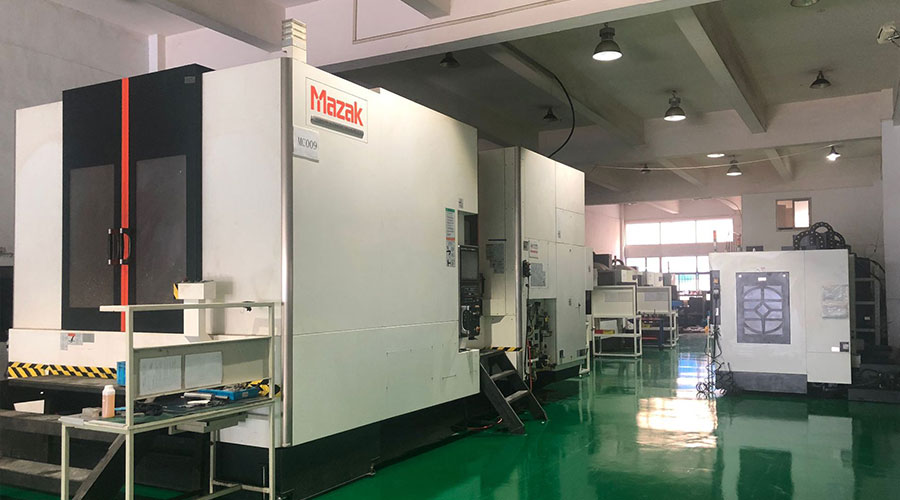 Sheet metal, beryllium, carbon steel, magnesium, 3D printing, precision CNC machining services for heavy equipment, construction, agriculture and hydraulic industries. Suitable for plastics and rare alloys machining. It can turn parts up to 15.7 inches in diameter. Processes include swiss machining,broaching, turning, milling, boring and threading. It also provides metal polishing, painting, surface grinding and shaft straightening services. The production range(include aluminum die casting and zinc die casting) is up to 50,000 pieces. Suitable for screw, coupling, bearing, pump, gearbox housing, drum dryer and rotary feed valve applications.PTJ will strategize with you to provide the most cost-effective services to help you reach your target,Welcome to Contact us ( [email protected] ) directly for your new project.
Sheet metal, beryllium, carbon steel, magnesium, 3D printing, precision CNC machining services for heavy equipment, construction, agriculture and hydraulic industries. Suitable for plastics and rare alloys machining. It can turn parts up to 15.7 inches in diameter. Processes include swiss machining,broaching, turning, milling, boring and threading. It also provides metal polishing, painting, surface grinding and shaft straightening services. The production range(include aluminum die casting and zinc die casting) is up to 50,000 pieces. Suitable for screw, coupling, bearing, pump, gearbox housing, drum dryer and rotary feed valve applications.PTJ will strategize with you to provide the most cost-effective services to help you reach your target,Welcome to Contact us ( [email protected] ) directly for your new project.
Link to this article:Detailed common faults and analysis of die casting machine
Reprint Statement: If there are no special instructions, all articles on this site are original. Please indicate the source for reprinting.:Cnc Machining,Thank!^^

